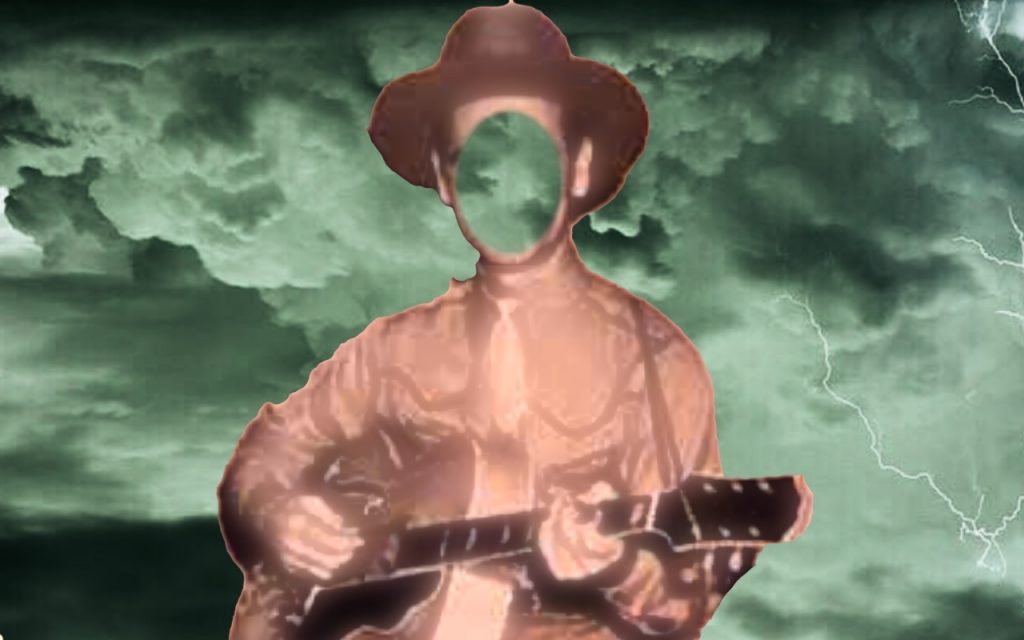Invisible Burdens: Country Queers and Mental Health
By Dale Henry Geist

I’ve been noticing a pattern in a lot of our interviews: time after time, artists revealed the hidden weight they carried in the form of mental health struggles. With that in mind, we are pleased to announce “Invisible Burdens,” a series of articles that explore mental health challenges in the lives of queer country artists. We’re not in a position to diagnose or recommend treatments, but we do believe that an essential step in healing is to get these stories out there.
Our writers will be tackling these themes from a variety of angles: some are covering particular artists and their perspectives, some are turning to their own experiences, and some are following specific throughlines within the broader “mental health” theme.
Some testimony from these pages:
“I’ve experienced drug addiction and debilitating depression, suicidal ideation, and whatnot. I just felt invisible to myself and the world.”
– Jaime Wyatt
“I really was angry and I had all kinds of emotional problems, and I had a really hard and painful bottom with drugs and alcohol, and part of digging out of that hole for me was, first I had to get sober, but second I had to do something that transforms the pain. And this is where songwriting came to the rescue.“
– Mary Gauthier
“Songs have served as a safe place for me to express my feelings — about anything. Love, the criminal justice system, depression, politics, addiction.”
– Jaimee Harris
“…in my teens and mid-twenties, my religion was severe depression. That’s a religion in itself. I really had a pretty dark phase in my life and that was just working through traumas.”
– D’orjay the Singing Shaman
“I believe that art can transmogrify. That the creative process can transform trauma into art. Into connection.”
– Allison Russell
What drives a person to express their innermost thoughts and feelings? What drives them so hard that they make a career of it?
One of the reasons artists become artists is to deal with psychological pain and trauma. Dig into interviews and writings by an artist, and somewhere along the way you’ll likely find a direct reference to something inside that needs healing.
I’m not saying anything new here: the fact that artists often struggle with mental health challenges is such common knowledge that it borders on cliché.
Now add to that being queer.
Mental health in the LGBTQ+ community is basically an ongoing crisis. Here are some sobering stats:
- LGBTQ+ individuals are more than twice as likely as heterosexuals to have a mental illness
- Those in the LGBTQ+ community are 2.5 times more likely to experience depression, anxiety, and substance abuse compared to heterosexuals.
- 31% of older adults in the LGBTQ+ community report depressive symptoms, and 39% report serious thoughts of suicide.
- Women who identify as lesbian or bisexual are more than twice as likely to engage in heavy drinking in the past month than heterosexual women.
- In LGBTQ+ people ages 10-24, suicide is a leading cause of death.
- The rate of suicide attempts for lesbian, gay, and bisexual youth is four times higher, and two times higher for youth questioning their sexual identity than heterosexual youth.
These stats just give an inkling: google “LGBTQ+ mental health” and you’ll get an avalanche of devastating results. And I haven’t even mentioned the increased barriers to treatment among queer folks.
Now add a pandemic to being queer and being an artist. The mental health challenges are nothing short of monumental.
We’ve created this series as a way to get these stories out there, to bring some of this darkness out into the light where it can help others who are struggling with their own issues.
Stay tuned.